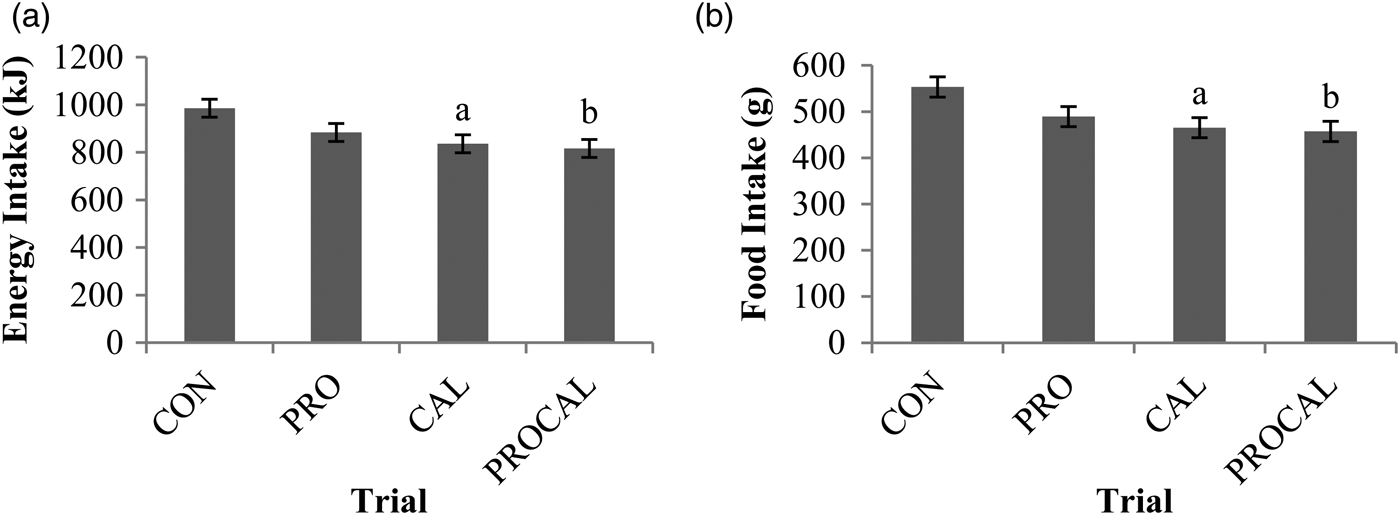There is convincing evidence that a high protein intake supresses appetite and reduces subsequent energy intake; associated with increases in satiety and the release of several gut peptides(Reference Halton and Hu1). Calcium intake may also elicit an improvement in appetite regulation and reduce subsequent energy intake, although the few studies that have assessed its direct impact are controversial(Reference Teegarden and Gunther2). We aimed to assess whether calcium and protein exhibit a synergistic effect on appetite and energy intake as well as influencing these independently.
Healthy male (n = 13) and female (n = 7) adults were recruited for the study. In a randomised double-blind, cross-over design each participant completed four trials. Each trial consisted of consuming a porridge based pre-load in a fasted state with differing calcium and protein content (porridge only, CON; high protein, PRO; high calcium, CAL; high protein and calcium, PROCAL). Visual analogue scales were used to determine subjective appetite sensations pre and at 15 min intervals during a 60 min post-prandial period, which was followed by the consumption of a pasta based test-meal ad-libitum. Time-averaged area under the curve subjective appetite ratings and mean food (g) and energy (kJ) intake of the ad-libitum test-meal in each trial were compared using ANOVA.
Energy and food intake in both the CAL and PROCAL trials were significantly lower than CON (p < 0·05). There was no significant difference in energy and food intake between PRO and CON (p > 0·05). Subjective appetite ratings were not significantly different between trials in the first 30 min of the post-prandial period. However hunger, fullness and prospective food consumption (PFC) were significantly influenced by trial in the 30–60 min of the post-prandial period; with the PROCAL trial in particular resulting in reduced hunger and PFC, and increased fullness compared to CON.
Contrary to the literature, protein ingestion did not appear to affect post-prandial appetite sensations or subsequent energy intake. It appears that consumption of calcium and the co-ingestion of protein and calcium elicited the greatest influence on subjective appetite and subsequent energy intake compared to control. The results of this study suggest that calcium consumption with or without the addition of protein improves appetite regulation and reduces subsequent energy intake.

Fig. 1. Mean energy intake (A) and food intake (B) of the ad-libitum test-meal (n = 20). CON control, PRO protein, CAL calcium, PROCAL protein and calcium, asignificant difference between CAL and CON, bsignificant difference between PROCAL and CON, all p < 0·05.



